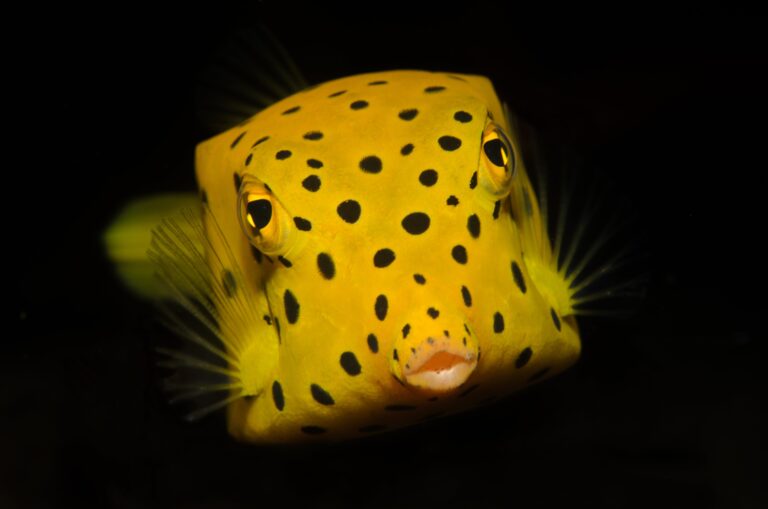Introduction
The oceans, the lifeblood of our planet, are facing unprecedented challenges in the 21st century. As we grapple with the consequences of climate change, pollution, and overfishing, the role of coastal ecosystems, particularly mangrove forests, becomes increasingly vital. In this exploration, we delve into the intricate relationship between ocean conservation and the preservation of coastal mangrove forests. Join us on a journey to understand why these unique ecosystems are crucial for the health of our seas and the overall well-being of our planet.
The Ecological Importance of Mangrove Forests:
Mangrove forests, often overlooked gems of the coastal ecosystems, play a crucial role in maintaining ecological balance. These unique ecosystems are found in tropical and subtropical regions, characterized by salt-tolerant trees and shrubs. One of their primary functions is carbon sequestration, helping mitigate the impacts of climate change. Mangroves absorb large amounts of carbon dioxide from the atmosphere, storing it in their biomass and the soil beneath them. This not only aids in regulating global carbon levels but also helps in purifying the air.
Moreover, mangroves act as natural filters for coastal waterways. The intricate root systems of mangrove trees trap sediments and pollutants, preventing them from reaching the open sea. This purification process enhances water quality and protects the delicate balance of marine ecosystems.
Role in Shoreline Protection Against Erosion and Storm Surges:
Mangrove forests act as nature’s shield, providing a vital line of defense against shoreline erosion and storm surges. The dense network of mangrove roots stabilizes the coastline by reducing the impact of waves and tides. These roots bind the soil together, preventing erosion caused by strong currents. In the face of storms and hurricanes, mangroves act as a barrier, absorbing the brunt of the force and protecting inland areas from devastating surges.
The effectiveness of mangroves in shoreline protection extends beyond their immediate vicinity. Coastal communities benefit from this natural defense mechanism, as mangroves help safeguard infrastructure, including homes, businesses, and agricultural lands. The preservation and restoration of mangrove habitats are, therefore, essential for building resilience in coastal areas vulnerable to the increasing frequency and intensity of extreme weather events.
Biodiversity Hotspots and Nurseries for Marine Life:
Mangrove forests are veritable biodiversity hotspots, supporting a myriad of plant and animal species. The complex root systems and the intertidal nature of mangrove ecosystems create a dynamic habitat that serves as a breeding ground and nursery for numerous marine organisms. Various species of fish, crustaceans, and mollusks use the sheltered waters among the mangrove roots as safe havens for their young, providing crucial support for marine food chains.
Additionally, migratory birds find refuge in mangrove habitats, relying on them for nesting and feeding grounds. The interconnected web of life in mangrove ecosystems fosters biodiversity, contributing to the overall health of coastal and marine environments. Conserving mangrove forests is imperative not only for the sake of the ecosystems themselves but also for preserving the abundance and diversity of marine life that depends on them for survival.
Mangroves as Carbon Sequestration Champions
Mangroves, often overlooked heroes in the fight against climate change, play a crucial role in sequestering and storing carbon. These unique ecosystems, found along coastlines in tropical and subtropical regions, are adept at capturing atmospheric carbon dioxide through a process known as carbon sequestration. The dense network of roots found in mangrove forests provides an ideal environment for the accumulation of organic matter, effectively trapping and storing carbon beneath the soil. In fact, mangroves are estimated to sequester carbon at rates up to four times higher than other tropical forests. This makes them formidable carbon sinks, helping to mitigate the impact of greenhouse gas emissions on our planet.
Importance of Mangroves in Mitigating Climate Change
The significance of mangroves in mitigating climate change cannot be overstated. As the world grapples with rising carbon dioxide levels and the resulting global warming, mangrove ecosystems emerge as natural allies in this battle. Beyond their ability to sequester carbon, mangroves act as a buffer against coastal erosion and storm surges, providing a protective barrier for vulnerable communities. The preservation and restoration of mangrove habitats are, therefore, integral to any comprehensive climate change strategy. Recognizing the multifaceted benefits of mangroves is essential for fostering a global commitment to their conservation, ensuring they continue to serve as invaluable guardians of our planet’s climate.
The Role of Mangroves in Supporting Sustainable Fisheries
Mangroves not only contribute to climate change mitigation but also play a pivotal role in supporting sustainable fisheries. These intricate ecosystems serve as essential nurseries for various marine species, providing a safe and nutrient-rich environment for juvenile fish and crustaceans. The intricate root systems of mangroves offer ideal hiding places for young marine life, shielding them from predators and providing abundant food sources. By fostering biodiversity and acting as breeding grounds for commercial fish species, mangroves indirectly contribute to the livelihoods of coastal communities dependent on fisheries. Sustainable management and conservation of mangroves are, therefore, critical not only for climate resilience but also for the long-term health of our marine ecosystems and the communities that depend on them.

Human Activities Threatening Mangrove Ecosystems
Mangrove ecosystems, vital for coastal biodiversity and ecological balance, face severe threats from various human activities. One of the primary challenges is deforestation driven by the demand for timber, agriculture, and infrastructure development. The clearing of mangrove forests for these purposes disrupts the delicate balance of these ecosystems, leading to the loss of crucial habitats for diverse flora and fauna.
Moreover, pollution poses a significant threat to mangroves. Urban and industrial discharges introduce harmful substances, including oil, heavy metals, and plastic, into mangrove waters. These pollutants can have detrimental effects on the health of mangrove trees and the species that inhabit these areas. The compromised water quality disrupts the intricate web of life within the mangrove ecosystem, threatening the survival of various species.
Additionally, overharvesting of mangrove resources, such as wood and fisheries, further accelerates the degradation of these habitats. Sustainable resource management practices are crucial to prevent the depletion of mangrove resources and ensure the long-term health of these ecosystems. Striking a balance between human needs and mangrove conservation is essential to mitigate the impact of these activities on these critical coastal environments.
Loss of Mangrove Habitat Due to Urbanization and Aquaculture
The rapid pace of urbanization and the expansion of aquaculture are contributing significantly to the loss of mangrove habitat. As coastal areas are developed to meet the growing demands of human populations, mangrove forests often make way for infrastructure, tourism facilities, and residential areas. The conversion of mangrove habitats into urban landscapes not only diminishes biodiversity but also exposes coastal areas to increased vulnerability from natural disasters like storm surges and tsunamis.
Aquaculture, while addressing the global demand for seafood, poses a dual threat to mangroves. The creation of shrimp and fish ponds often involves clearing mangrove areas, leading to habitat loss. Additionally, the discharge of effluents from aquaculture facilities can introduce pollutants, disrupting the delicate balance of mangrove ecosystems. Sustainable planning and mangrove-friendly development policies are crucial to safeguard these habitats while meeting the needs of growing populations.
The Impact of Climate Change on Mangrove Health
Climate change poses a formidable challenge to the health of mangrove ecosystems. Rising sea levels, increased temperatures, and extreme weather events, such as hurricanes and cyclones, directly impact mangroves. Elevated sea levels can lead to saltwater intrusion into freshwater habitats, affecting the adaptability of mangrove species to changing environmental conditions.
Furthermore, changes in temperature and precipitation patterns can influence the growth and reproduction cycles of mangrove trees, potentially affecting their overall resilience. Mangroves act as natural buffers against coastal erosion and storm surges, and their degradation due to climate change compromises the protection they provide to coastal communities.
Mitigating the impact of climate change on mangroves requires global efforts to reduce greenhouse gas emissions and implement adaptive measures. Conservation strategies should include the restoration of degraded mangrove areas and the establishment of protected zones to enhance the resilience of these critical ecosystems.
Overview of Successful Mangrove Conservation Projects Worldwide
Mangrove conservation projects across the globe have demonstrated the effectiveness of concerted efforts in preserving these critical ecosystems. One notable example is the Madagascar Mangrove Project, where a collaborative initiative involving local communities, non-governmental organizations (NGOs), and government bodies successfully implemented sustainable practices. Through the establishment of protected areas, active reforestation efforts, and community engagement, the project has significantly contributed to the regeneration of mangrove habitats in Madagascar.
In Southeast Asia, the Thai Royal Forest Department’s Mangrove Reforestation Project stands out. This initiative focuses on replanting mangroves in areas affected by deforestation and industrial activities. By integrating scientific research, community participation, and government support, Thailand has witnessed a remarkable revival of mangrove ecosystems. The project serves as a model for balancing economic development with environmental conservation.
The Importance of Community Involvement in Mangrove Preservation
Community involvement is crucial for the success of mangrove preservation efforts. Local communities, particularly those dependent on mangrove resources, play a pivotal role in ensuring the sustainable management of these ecosystems. Involving communities in decision-making processes fosters a sense of ownership and responsibility, promoting long-term commitment to conservation.
The Kido Foundation’s community-driven mangrove conservation in Indonesia exemplifies the power of grassroots involvement. By educating and empowering local communities to actively participate in mangrove protection, the foundation has created a sustainable model where communities not only benefit from the mangroves but also actively contribute to their preservation.
Sustainable Management Practices for the Long-Term Health of Mangrove Ecosystems
To ensure the long-term health of mangrove ecosystems, adopting sustainable management practices is imperative. Integrated coastal zone management plans that consider the ecological, social, and economic aspects are essential. The implementation of zoning regulations, sustainable harvesting practices, and regular monitoring contribute to the overall resilience of mangrove ecosystems.
The Belize Integrated Coastal Zone Management Plan is a prime example. By combining scientific expertise with community involvement, Belize has successfully managed its mangrove resources. The establishment of marine protected areas, enforcement of fishing regulations, and public awareness campaigns have collectively contributed to the preservation of Belize’s mangrove ecosystems. This holistic approach serves as a blueprint for countries seeking sustainable management strategies for their mangrove habitats.
Video Credit: The Economist
FAQs
Q. Why are mangroves essential for coastal areas?
A. Mangroves act as natural barriers, protecting coastlines from storm surges, and fostering biodiversity crucial for marine and terrestrial life.
Q. How can individuals contribute to mangrove conservation?
A. Individuals can support conservation by participating in local initiatives, avoiding products that contribute to deforestation, and promoting awareness.
Q. Do mangroves only grow in tropical regions?
A. While predominantly found in tropical regions, some mangrove species can tolerate subtropical and warm temperate climates.
Q. Can mangroves adapt to rising sea levels?
A. Mangroves exhibit adaptability to rising sea levels through vertical root growth and sediment accumulation, enhancing their resilience.
Q. Are there economic benefits to preserving mangrove forests?
A. Preserving mangroves provides economic benefits through fisheries, ecotourism, and sustainable resource management, supporting coastal communities.
Q. How can climate change impact mangrove ecosystems?
A. Climate change can result in sea-level rise, extreme weather events, and altered precipitation patterns, posing threats to mangrove ecosystems.
Conclusion
In the intricate tapestry of ocean conservation, mangrove forests emerge as unsung heroes, playing a pivotal role in sustaining the delicate balance of marine ecosystems. As we conclude our exploration into the significance of mangroves, it is evident that their preservation is not just an environmental concern but a global imperative. By recognizing and safeguarding these coastal wonders, we take a significant step towards ensuring the resilience of our oceans. Let this be a call to action, urging individuals, communities, and nations to come together in the pursuit of a sustainable future where the oceans and mangrove forests thrive hand in hand. The fate of our seas rests in our hands, and through mindful conservation, we can secure a legacy of flourishing marine life for generations to come.
UP NEXT
The Impact of Ocean Conservation on Seabird Migration Routes



